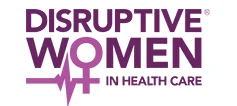As I watch the power in healthcare shift away from physicians/providers toward consumers/patients (enabled by the wide access to information and driven in part by higher co-pays), I can’t help but to observe the affects of the Affordable Care Act on both this new power and the bedrock concept of healthcare delivery—“standards of care”.
As I watch the power in healthcare shift away from physicians/providers toward consumers/patients (enabled by the wide access to information and driven in part by higher co-pays), I can’t help but to observe the affects of the Affordable Care Act on both this new power and the bedrock concept of healthcare delivery—“standards of care”.
Rob Lamberts, a physician who switched his practice from fee-for-service to “direct care” (in which patients buy in as a member instead of paying for each procedure and visit, and receive a basic set of services), has compared the changes in healthcare delivery to the upheaval caused by digital cameras. Just as the move from film to digital imagery brought photography closer to the consumer, mobile apps and web-accessible information will move healthcare delivery closer to customers (a.k.a., patients). Film companies like Kodak failed to recognize the disruptive innovations wrought by digital photography; could consumer power provide the same disruptive innovation to healthcare? As healthcare industry expenses approach 18% of GDP, the unsustainable weight of healthcare costs practically beg for such a disruption.
The Affordable Care Act (ACA), as well as other regulations and pending legislation, is addressing healthcare delivery standards and relating those standards to costs. The ACA will require health plans to be delivered at four levels of coverage: bronze, silver, gold and platinum. Bronze plans will require the highest copayments, and platinum the lowest. All, however, will have to cover basic benefits such as ambulatory services, emergency care, hospitalization, maternity/newborn care, mental health, prescription drugs, rehabilitation, laboratory services, prevention and wellness, and chronic disease management. At the same time, high-end concierge services—the so called “Cadillac health insurance”—will be subject to a 40% tax.
The sheer size of the plans under the ACA will require more standardization of insurance coverage, and new and potentially different concepts of “standards of care.” I believe we will see the basic package become the core “standard” with more costly but more generous premium services layered on top. And we will see a rapid shift from fee-for-service to global payments for various levels of service intensity.
But can you also have too much health care? Standards of care, developed by professional organizations, have traditionally answered this question. With these new levels of care, standards are no longer decided exclusively by physicians and specialists’ organizations; they’re increasingly influenced by patient choices. So the concept of guideline-driven medicine may no longer be in the eye of the physician but in the eye of the policy-holder.
Is the U.S. consumer ready for so much service choice? Where does the responsibility for consumer education fall? What mechanisms should we put in place to measure quality and reward efficient providers? Let us know what you think.







